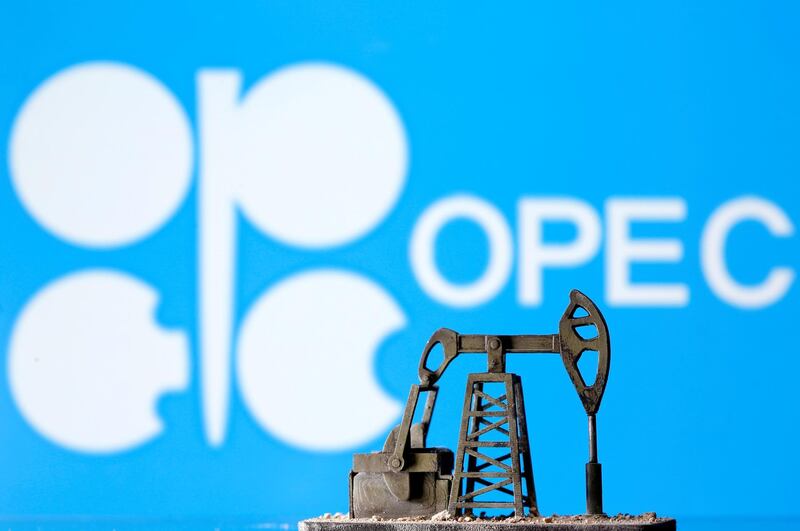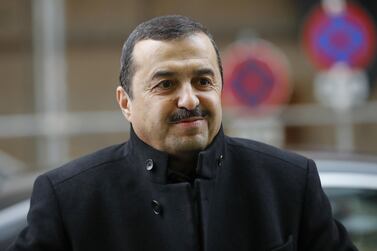Middle East oil producers face a complex problem charting a safe course out of the price slump caused by the global spread of Covid-19.
Opec’s next meeting will provide the first opportunity to reassess the group’s strategy since major consuming nations took their initial steps to loosen strict lockdowns, potentially reviving demand.
The choice is stark. Ease back on production cuts too soon and risk overwhelming finite global storage capacity and delaying the rebalancing of the market. Or else, maintain existing cuts for too long to boost prices faster, but in doing so revive the hopes of US shale producers and lose market share.
Dated Brent – the physical benchmark used to price two-thirds of the world’s oil – has given producers some hope. The measure has more than doubled in value since hitting a 21-year low in April and is now trading at around $33 a barrel. Not ideal, but enough to keep the industry functioning. Prices have recovered as signs of demand increase daily, especially in areas such as road transport and shipping.
“Today’s price reflects optimism in the market, but further upside will most likely be limited due to higher oil stocks and logistics constraints in US supply, leading to some discounting,” said Chris
Midgley, global head of Platts Analytics. “Demand is partially recovering, as people return to cars, but other areas such as aviation will see much longer U-shaped recoveries.”
The feared exhaustion of global storage capacity, which briefly contributed to some niche headline US oil prices turning negative in April, has abated. VLCC freight rates have fallen back to around $50,000 per day (Dh183,500), from a peak of $200,000 per day this year at the height of the crisis as storage demand as eased.
Motorists are helping to restart demand. According to Apple Maps data based on routing requests, road traffic in Britain has doubled since the peak of the travel restrictions enforced in early April. In the US – the world’s largest oil-consuming nation – the same data shows road journeys beginning to approach pre-pandemic levels as more states open up ahead of the summer driving season. Road congestion in Beijing is back to normal.
According to Platts Analytics, the steady reopening of the US and Europe has helped add 3.6 million barrels a day to demand in May compared with April’s collapse. However, the overall consumption outlook remains bleak, with demand down 17 million barrels a day year-on-year in the second quarter.
Heading into Opec’s next discussions, both heavyweights Saudi Arabia and Russia are putting on a unified front. The Kremlin has said they want to continue coordination after president Vladimir Putin and crown prince Mohamed bin Salman discussed the oil market in a recent telephone call.
The kingdom – which wants prices to trade above $80 a barrel to fund its budget – doubled down this month on its commitment to do whatever it takes to rebalance the oil market by announcing its intention to cut another 1 million barrels from its daily supplies starting in June.
However, doubts remain over Russia’s willingness to continue pledging meaningful long-term commitments to limiting its supplies, especially if a damaging second-wave of lockdowns is avoided. Russia’s energy ministry is forecasting a balanced market by June, or July, indicating it is looking forward to the Opec+ cuts possibly easing over the summer.
The country also saw its shipments to China increase by almost 18 per cent year-on-year to 7.2 million barrels a day in April, compared with an 18 per cent decline for Saudi Arabia, according to official data.
Any easing back on cuts by Russia, Saudi Arabia and its major Gulf allies could boost US shale, which has temporarily been put on hold by the global pandemic.
Platts Analytics estimates more than 14 million barrels a day of shut-ins, or production cuts across non-Opec and Opec+ announced since the group’s last meeting in March.
Meanwhile, the number of rigs operating in America has dropped 65 per cent and more workers on fracking sites have joined the swelling numbers of America’s almost 39 million unemployed. Crude output in the country has fallen by 1.6 million barrels a day from March to a total of 11.5 million barrels a day, according to the US Energy Information Administration.
The unprecedented collapse in demand caused by the pandemic made Opec’s choice to suspend its price war with Russia and agree historic cuts in March the only choice. But the ending of lockdowns and glimmers of returning demand make its decision in June more complicated.
Andy Critchlow is head of energy news, Emea at S&P Global Platts







